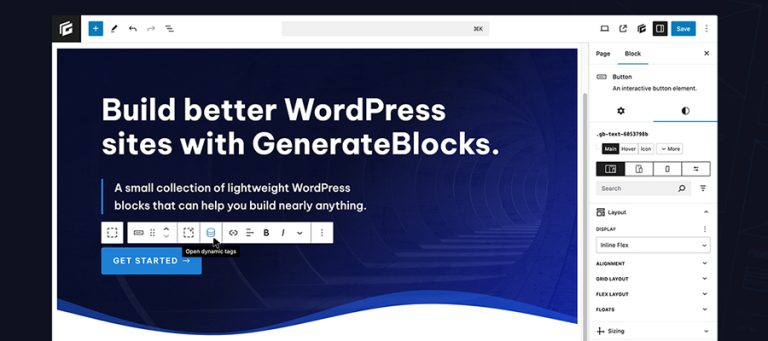Traditional search tracking is built on a simple promise: type a query, get a result, and track your ranking. AI doesn’t work that way.
Assistants like ChatGPT, Gemini, and Perplexity don’t show fixed results—they generate answers that vary with every run, every model, and every user.
“AI rank tracking” is a misnomer—you can’t track AI like you do traditional search.
But that doesn’t mean you shouldn’t track it at all.
You just need to adjust the questions you’re asking, and the way you measure your brand’s visibility.
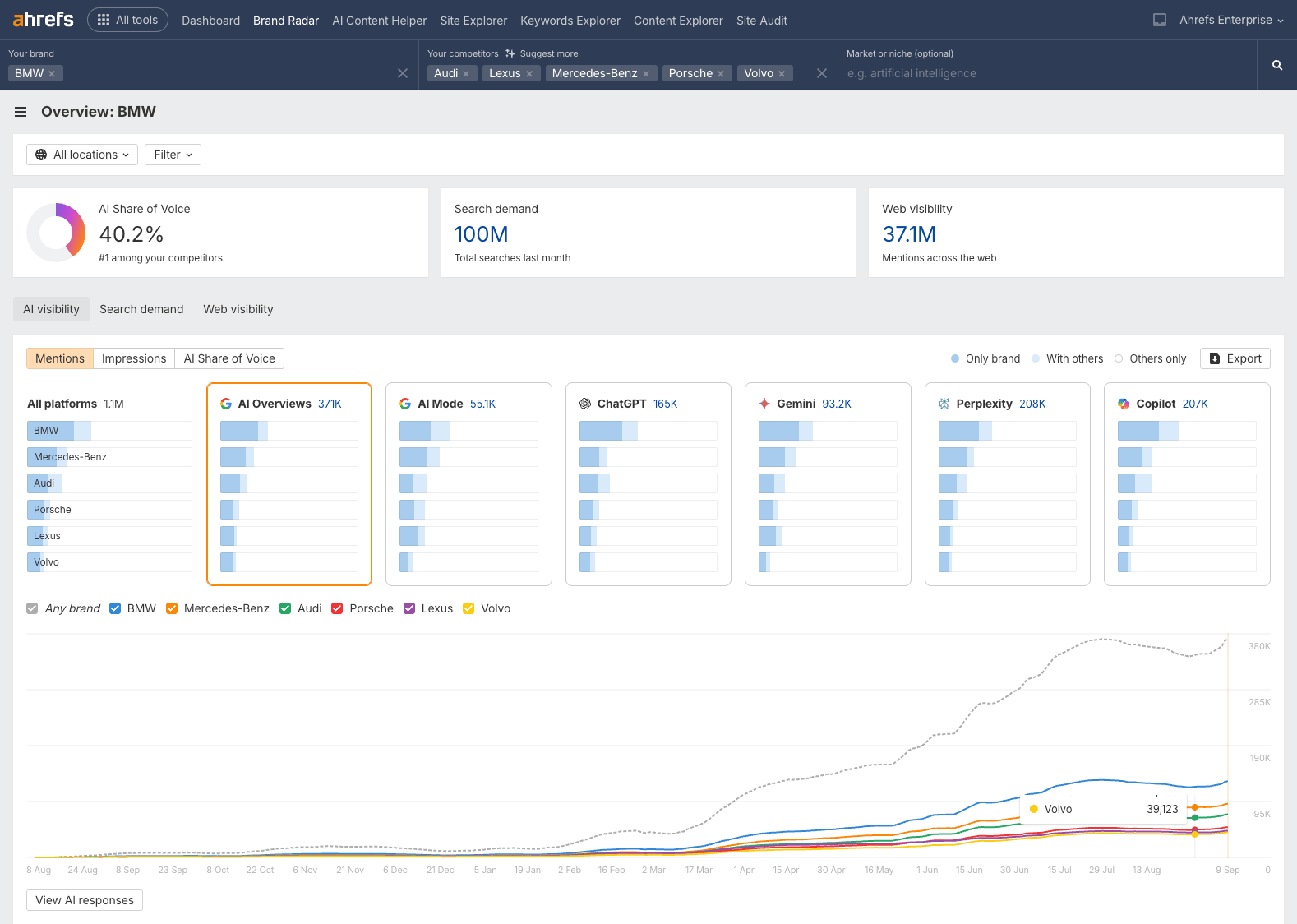
A major stumbling block when it comes to AI search tracking is that none of us know what people are actually searching en masse.
Unlike search engines, which publish keyword volumes, AI companies keep prompt logs private—that data never leaves their servers.
That makes prioritization tricky, and means it’s hard to know where to start when it comes to optimizing for AI visibility.
To move past this, we seed Brand Radar’s database with real search data: questions from our keyword database and People Also Ask queries, paired with search volume.
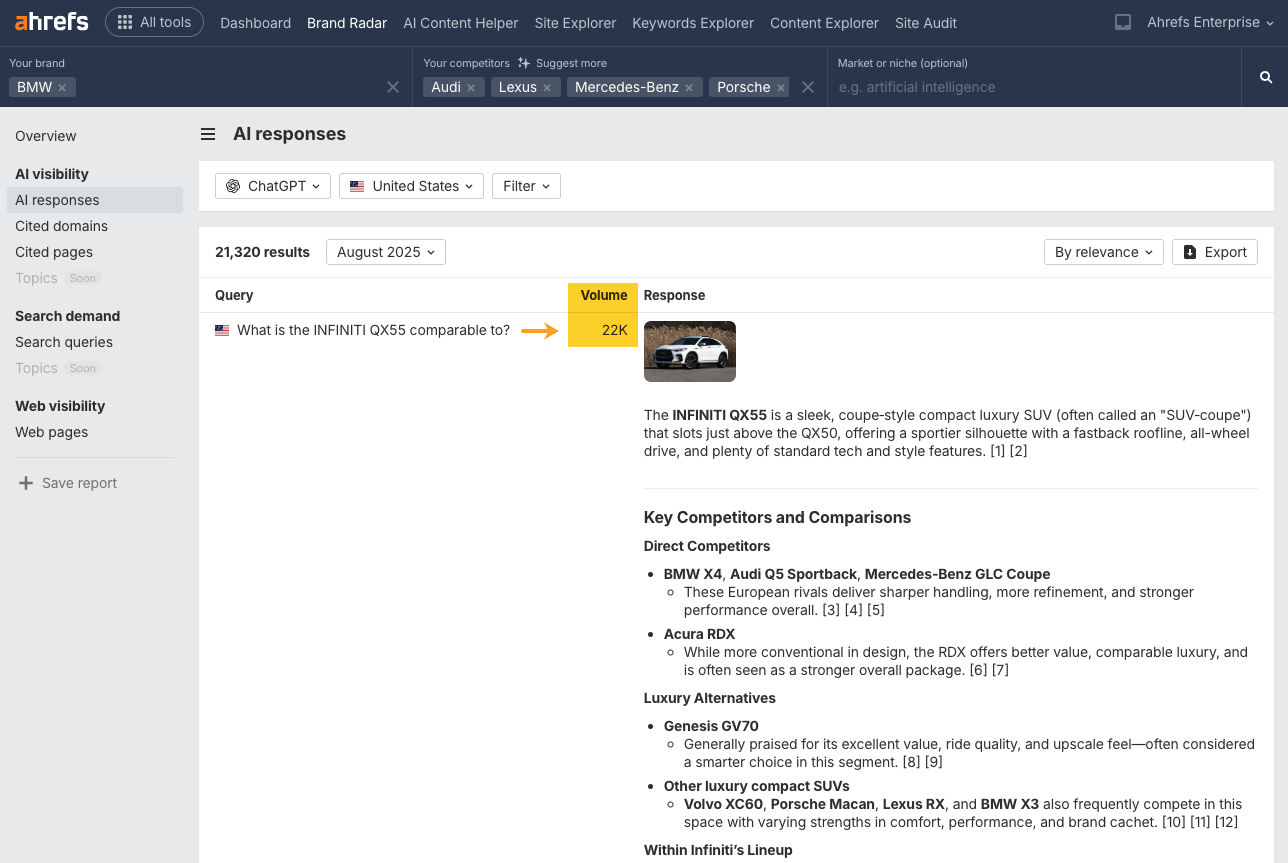
These are still “synthetic” prompts, but they reflect real world demand.
Our goal isn’t to tell you whether you appear for a single AI query, it’s to show you how visible your brand is across entire topics.
If you can see that you have great visibility for a topic, you don’t need to track hundreds of specific prompts within that topic, because you already understand the underlying probability that you’ll be mentioned.
By focusing on aggregated visibility, you can move past noisy outputs:
- See if AI consistently ties you to a category—not just if you appeared once.
- Track trends over time—not just snapshots.
- Learn how your brand is positioned against competitors—not just mentioned.
Think of AI tracking less like rank tracking and more like polling.
You don’t care about one answer, you care about the direction of the trend across a statistically significant amount of data.
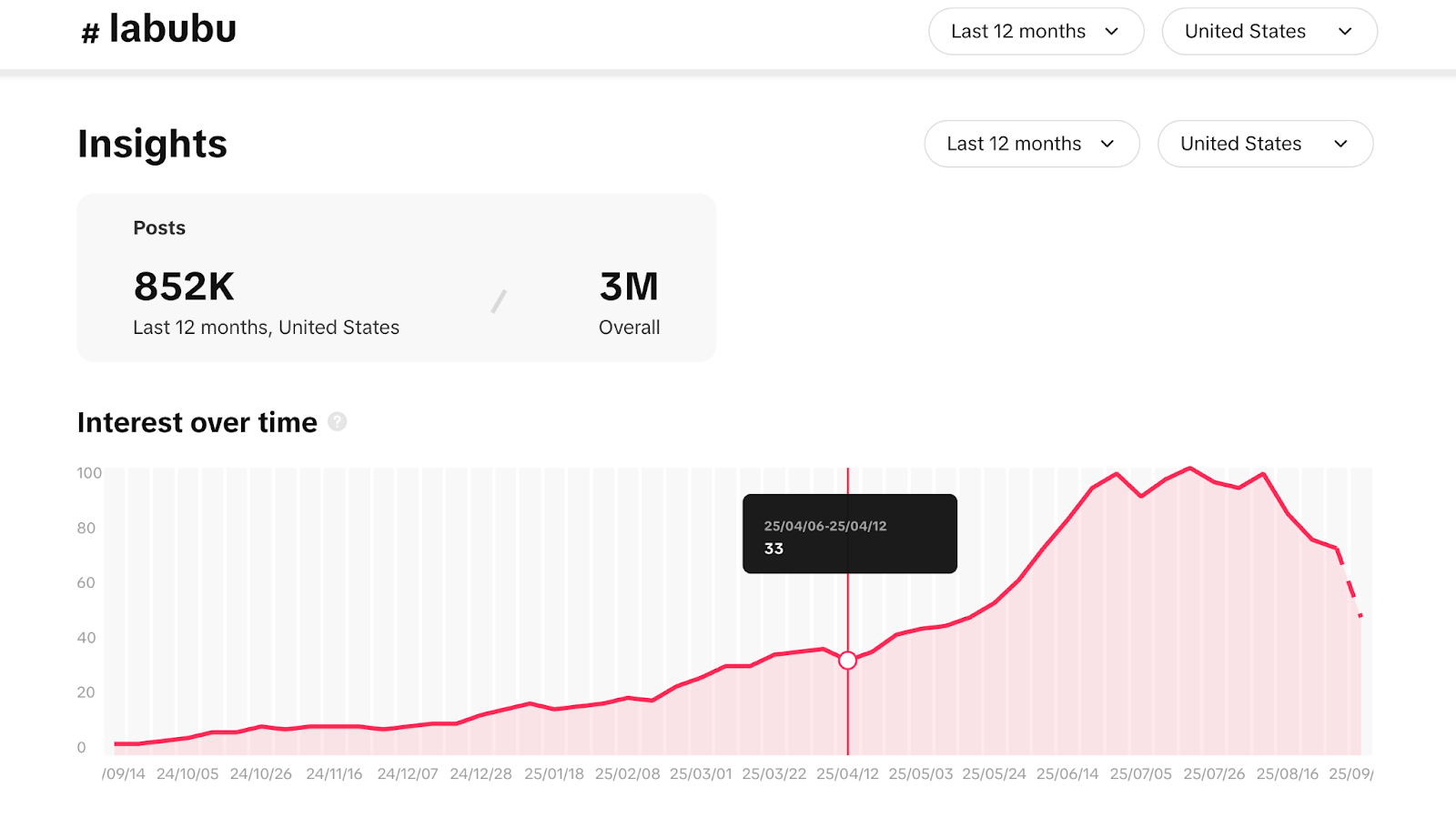
May: Thousands of “Labubu” related search queries start showing up in the SERPs.
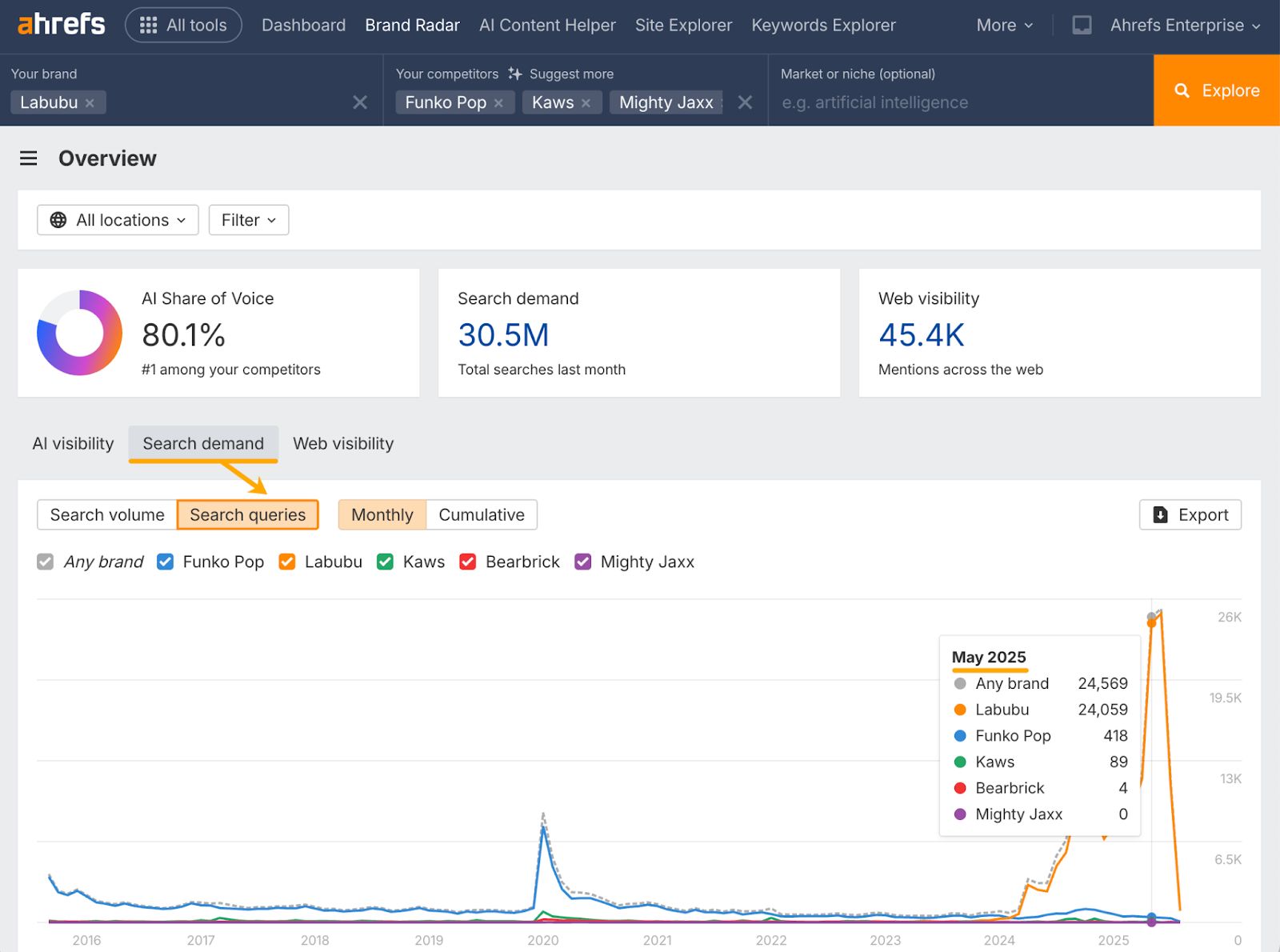
July: Search volume spikes for those same “Labubu” queries.
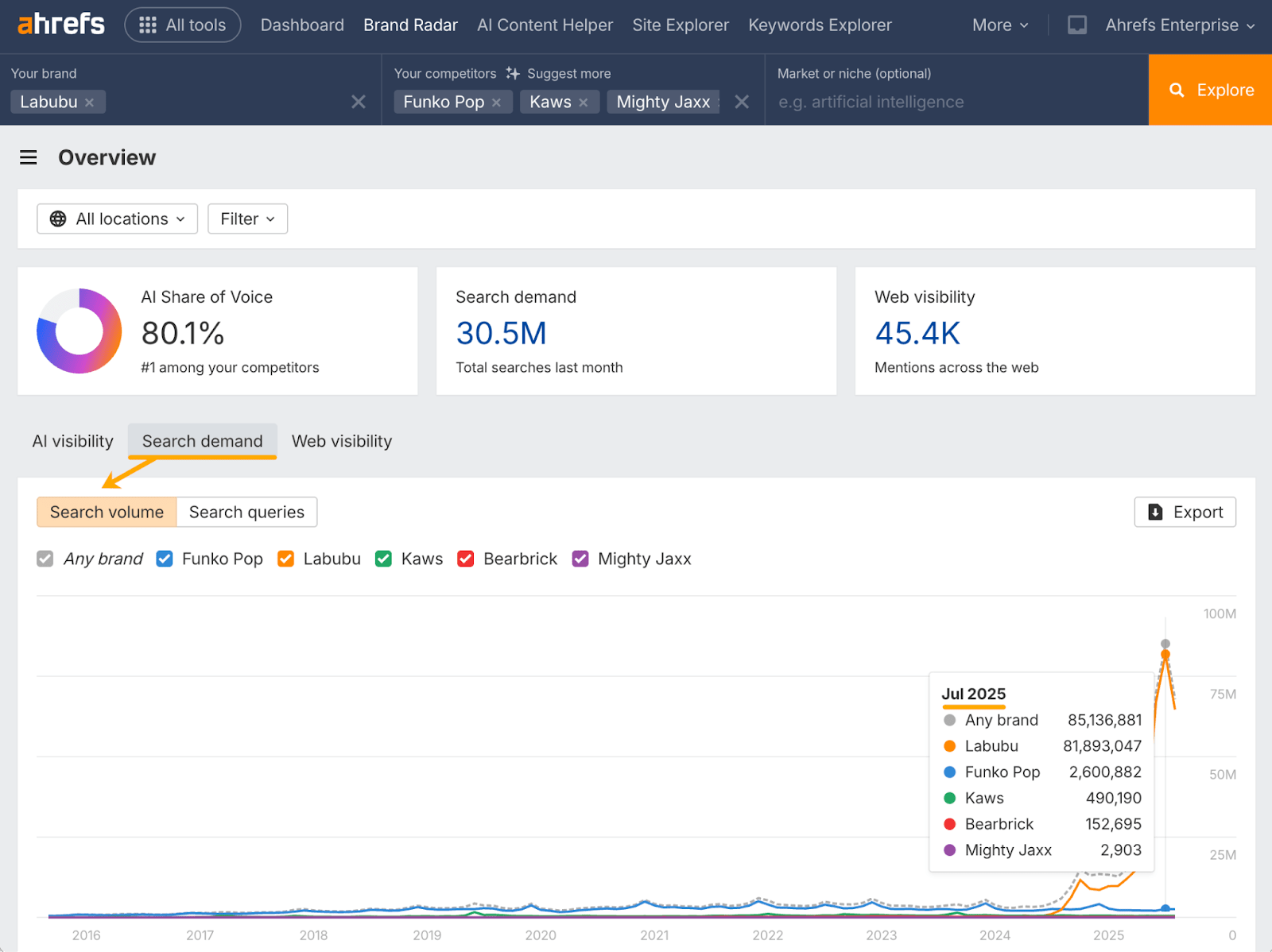
Also in July, web mentions for “Labubu” surge, overtaking market-leading toy Funko Pop.
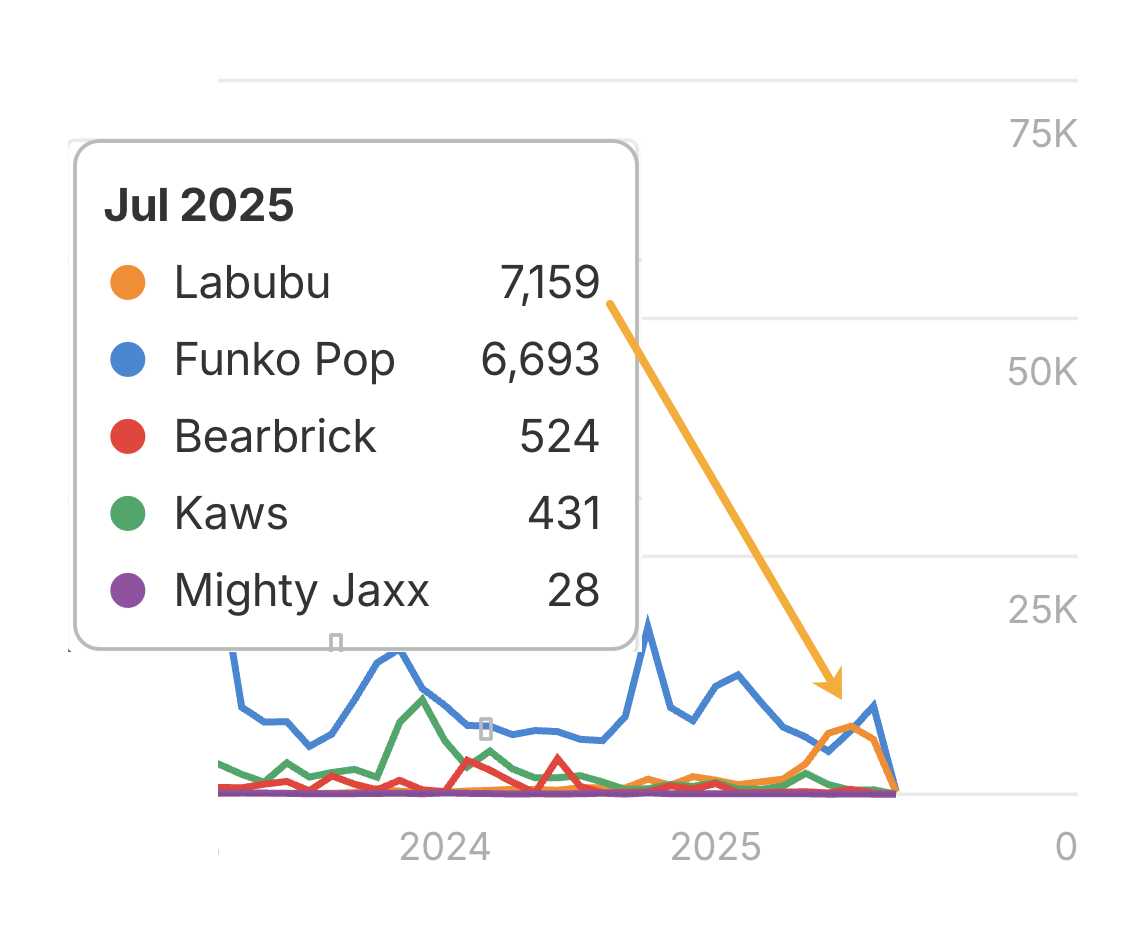
August: Labubu crosses over into AI visibility, gaining mentions in Google’s AI Overviews in late August—overtaking another leading toy brand: Kaws.
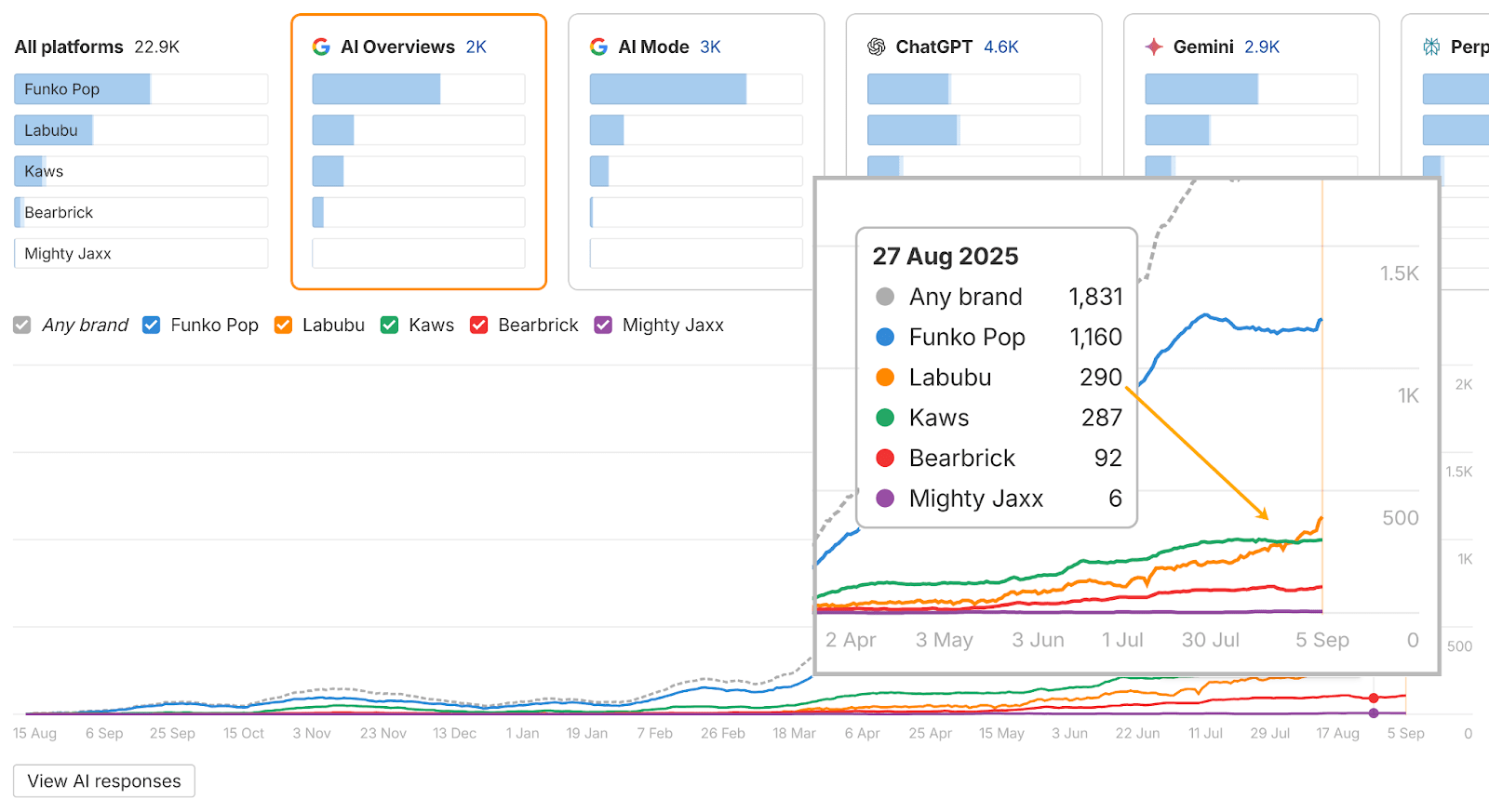
Also in August, Labubu overtakes all other competitors in ChatGPT conversations.
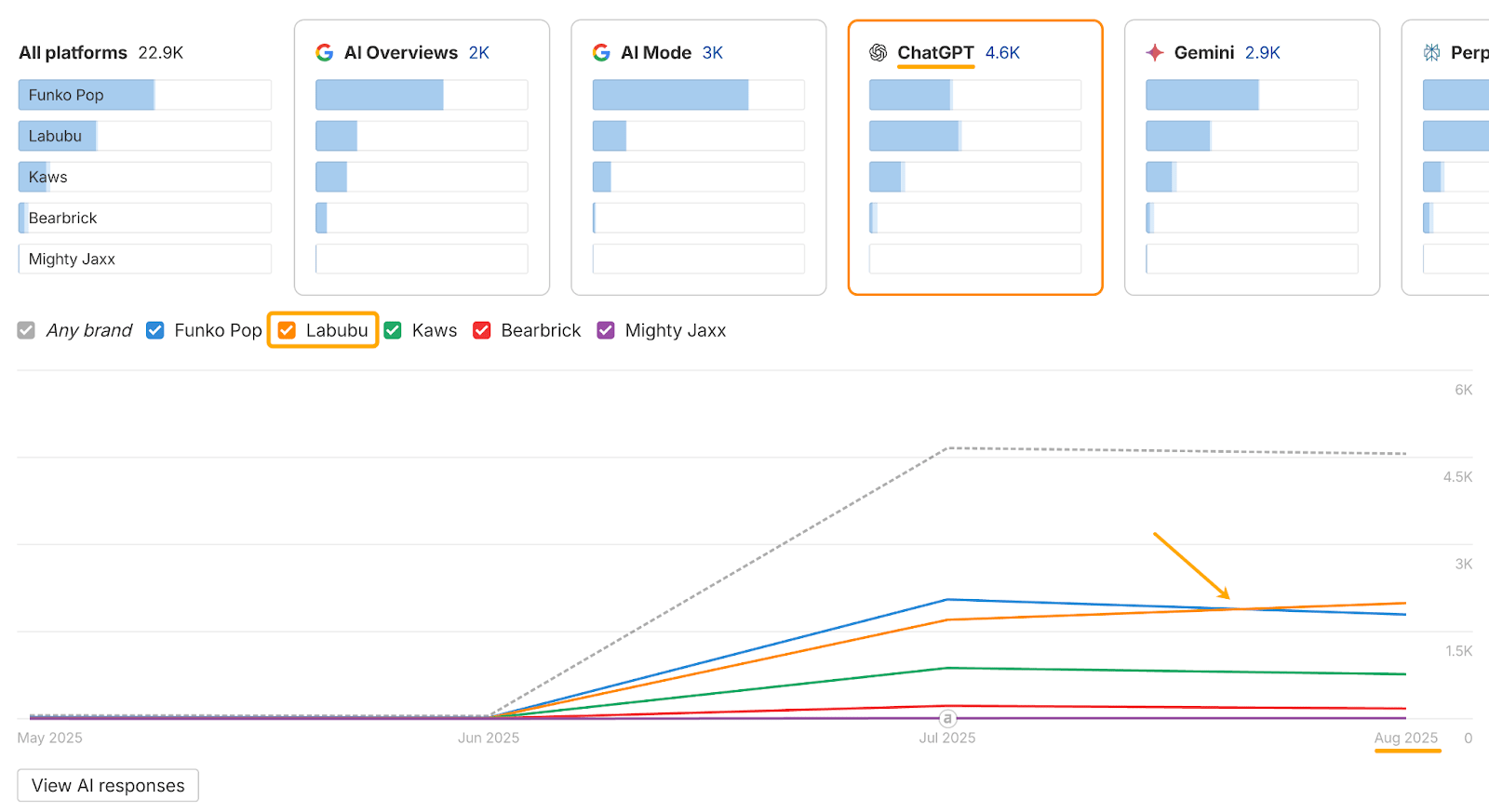
This example shows that AI is part of a wider discovery ecosystem.
By tracking it directionally, you can see when and how a brand (or trend) breaks through into AI.
In all, it took four months for the Labubu brand to surface in AI conversations.
By running the same analysis on competitors, you can evaluate different scenarios, replicate what works, and set realistic expectations for your own AI visibility timeline.
But, AI responses still describe us primarily as an ‘SEO’ or ‘Backlinks’ tool.
By putting out consistent AI features, products, content, and messaging, our positioning is now beginning to shift on some AI surfaces.
You can see this when the red trend line (AI) overtakes the green (Backlinks) in the chart below.
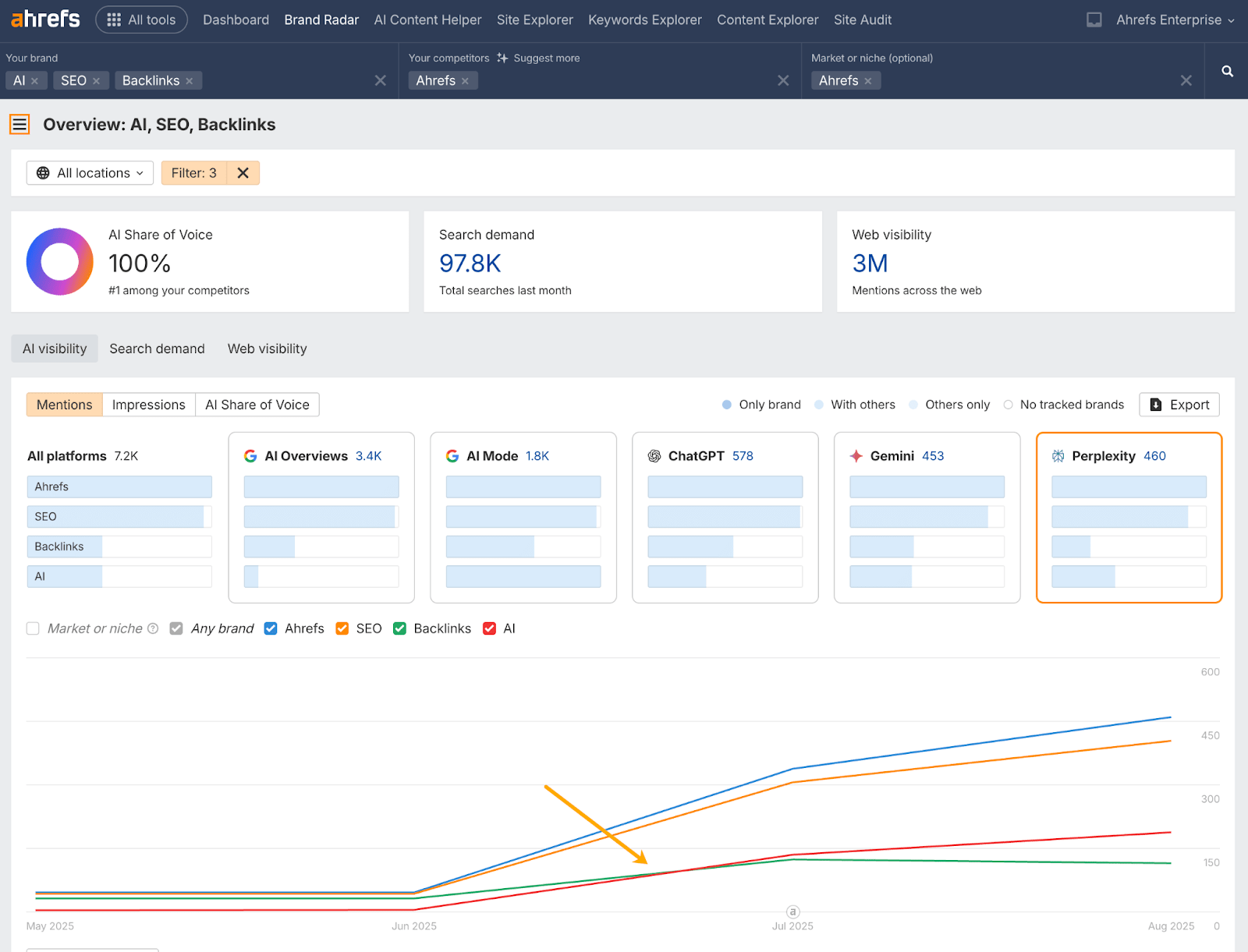
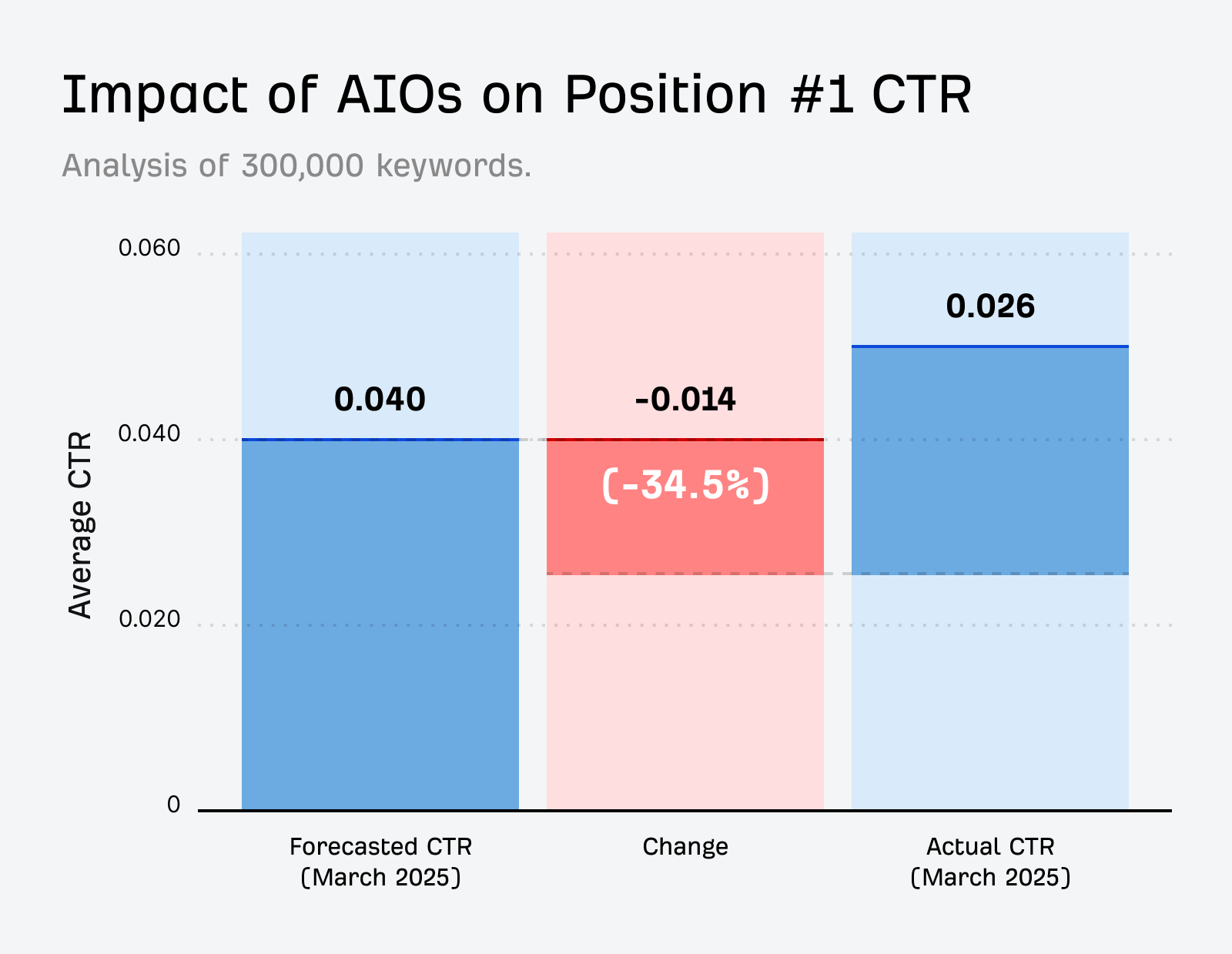
That means being named in AI answers is no longer optional.
AI assistants are already part of the discovery journey.
People turn to ChatGPT, Gemini, and Copilot for product recommendations, not just quick facts.
If your brand isn’t in those answers, you’re invisible at the exact moment decisions are made.
That’s why tracking AI visibility matters.
Even if the data is noisy, it shows whether you’re part of the conversation—or whether competitors are taking the spotlight.
In a perfect world, tracking AI visibility on a micro and macro level isn’t an either–or choice.
Micro tracking for high-stakes AI prompts
Micro tracking is about zooming in on the handful of queries that really matter to your business.
These might include:
- Branded prompts: e.g. “What is [Brand] known for?”
- Competitor comparisons: e.g. “[Brand] vs [Competitor]”
- Bottom-of-funnel purchase queries: e.g. “best [product] for [audience]”
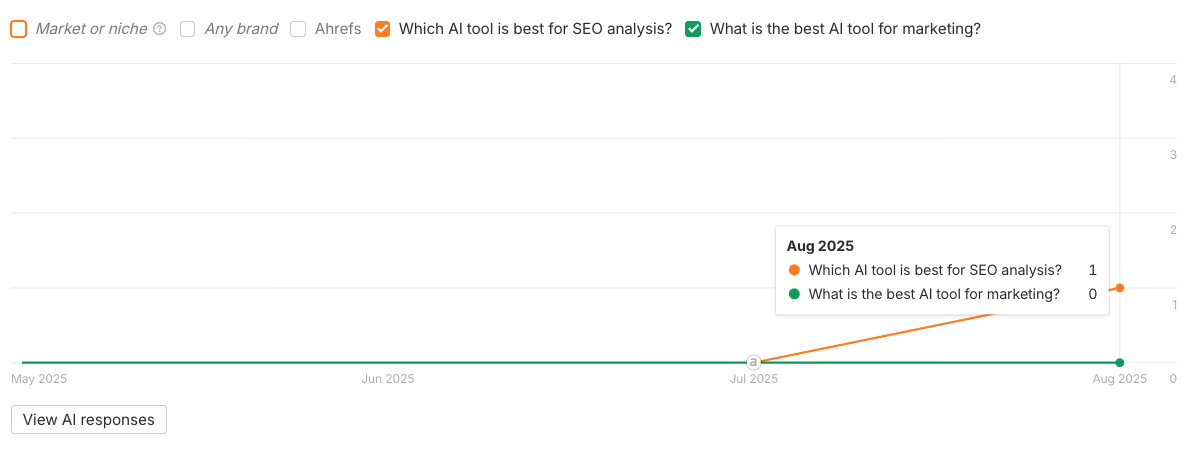
Even though AI responses are probabilistic, it’s still worth monitoring these “make or break” queries where visibility or accuracy really matters.
Macro tracking for overall AI visibility
Macro tracking is about zooming out to understand the bigger picture of how AI connects your brand to topics and markets.
This approach is about monitoring thousands of variations to spot patterns, find new opportunities, and map the competitive landscape.
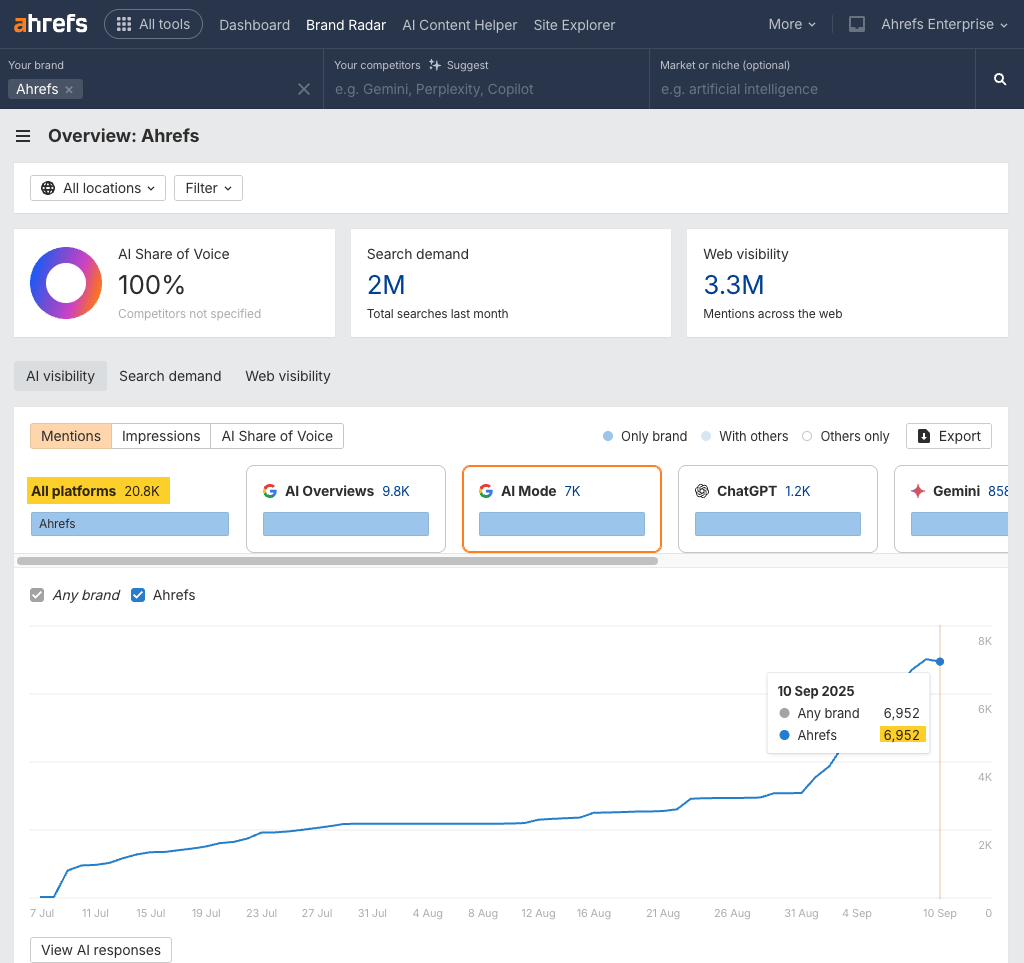
Most AI tools only handle the first mode, but Ahrefs’ Brand Radar can help you with both.
It lets you keep tabs on business-critical prompts while also surfacing the unknown unknowns.
And soon it’ll support custom prompts, so you can get even more granular with your tracking.
Looking at both levels helps you answer two questions: are you present where it counts, and are you strong enough to dominate the market?
Final thoughts
No, you’ll never track AI interactions in the same way you track traditional searches.
But that’s not the point.
AI search tracking is a compass—it will show if you’re headed in the right direction.
The real risk is ignoring your AI visibility while competitors build presence in the space.
Start now, treat the data as directional, and use it to shape your content, PR, and positioning.
Similar Posts

20+ Incredible Photoshop Actions for Sketching Effects in 2025
Turning your photographs into sketches is a great way to add a unique artistic touch to your work. But how can you achieve this without having to manually draw every image? The answer is Photoshop actions. This collection of Photoshop actions offers various options for transforming photos into beautiful sketches. They take the guesswork out…

8 Best Block Suites You Can Add to WordPress
The WordPress Block Editor provides designers with great flexibility. You can build page layouts in minutes rather than hours. And the included blocks offer a range of basic functionality. That only scratches the surface, however. Custom blocks let you integrate with third-party services, add dynamic content, or create complex layouts. The right blocks help you…

Generative Engines Are Breaking Web Analytics and Hurting Their Future
Search is moving from traditional search engines to generative engines, but traffic from many of these sites isn’t being tracked properly in analytics. It’s their fault, not yours. I was looking at our LLM filter in Ahrefs Web Analytics and noticed some common generative engines missing from the list. They’re in our filters, but we aren’t…

3+ Best Free Minecraft Server Hosting 24/7 With Mods (Live)
Minecraft is a game where you get a gaming experience of fantastic adventure with limitless possibilities like mining, building safe zones, fighting, looting your enemy’s safe zones, and much more. It has come a long way since its launch and has become one of the most popular games in the world today. Usually, people play…

20+ Best Photoshop Action for Glitch Photo Effects in 2025 — Speckyboy
Glitch effects are a great way for making a statement with your photos or graphics. However, manually creating these effects can be difficult. Luckily, Photoshop actions provide a simple solution. Glitch effect Photoshop actions are pre-made adjustments or edits that allow you to create digital effects that mimic the look of technological glitches, malfunctions, or…
Fresh Batch of New Videos Added to Module Developer Guide Tutorials
We have been working on recording, editing, and publishing videos for the step-by-step “task” tutorials in our Module Developer Guide. As many of these tutorials are code heavy, you have the advantage of a video walk-through as well as code examples to copy and paste in the written version of the tutorial. Videos added to…


